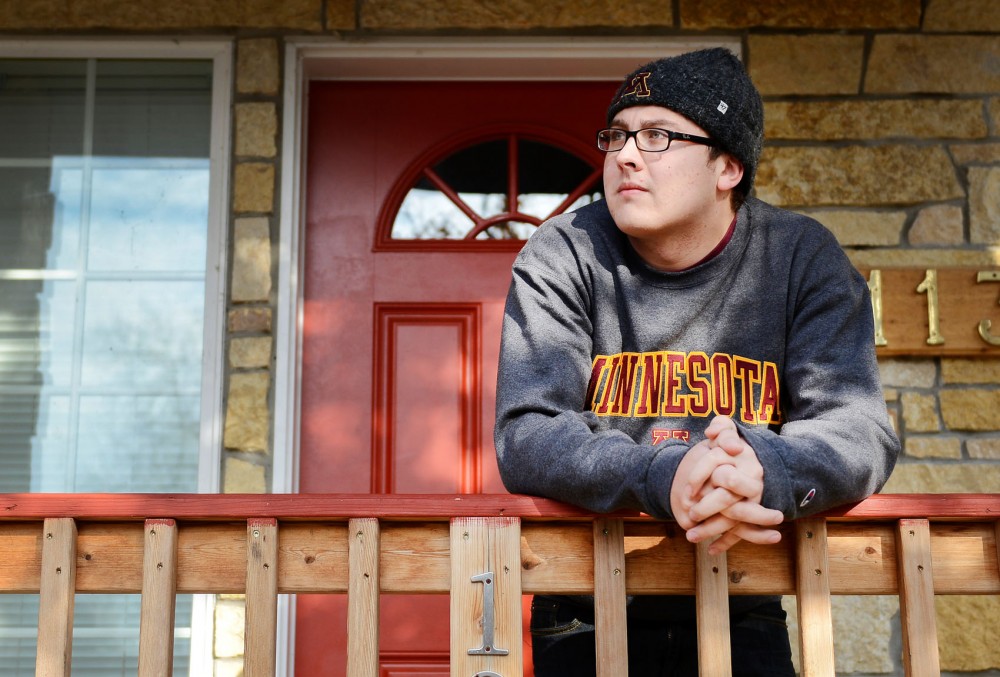Crime is changing at the University of Minnesota.
As police continue to send alerts of violent incidents on and around campus, they say they’re seeing more out-of-town suspects come to the campus area to prey on students.
Officials say it’s common for criminals to flock to populated areas, and the problem of out-of-town suspects is not unique to the University community.
And though crimes described in email alerts are violent, they make up a small portion of total incidents around the University.
But amid the overall downward trend in crime, some say they think the recent incidents seem more violent and bold than those in the past.
Crimes becoming more ‘brazen’
Crime across the University area is trending downward, and many officials say the recent crimes aren’t far off from historical trends.
But others say the recent incidents seem different.
Ryan Allen, an assistant professor in the Humphrey School of Public Affairs, said recent crimes around campus appear more aggressive than past incidents during his six years at the University.
Allen pointed specifically to the attempted armed robbery in Anderson Hall last month. In that incident, a man approached a student, displayed a handgun and caused a West Bank lockdown in the middle of the afternoon.
“If you were a risk-averse criminal, you probably wouldn’t have picked [the afternoon] as your time,“ Allen said.
An armed robbery at the bus stop outside University Village apartments Saturday followed a similar pattern. The suspects showed the victim a gun before punching him and stealing his wallet, cellphone and backpack, according to the Minneapolis police report.
And despite police advice that it’s safer to walk in a group, suspects also seem to be targeting larger groups of people, which Miner said is “a cause for concern.“
In eight of the 19 incidents recorded in this semester’s crime alerts, the victims were in groups of two or more people.
Several of the crimes that triggered alerts this semester, including a sexual assault in Southeast Como, have involved groups of suspects. And suspects in eight of the crime alerts sent so far this semester have been armed.
In one case last month, business and marketing education sophomore Alex Granquist was robbed at gunpoint early in the morning outside his house in Marcy-Holmes.
Granquist said he still feels relatively safe around campus.
Since 2008, University police have recorded an almost 28 percent drop in Part I crimes — the category that includes the most serious offenses like homicide and rape.
Robberies and assaults have triggered almost all of the campus crime alerts this school year. They made up an average of about 9 percent of all Part I crimes in the five University neighborhoods during the first 10 months of this year, according to Minneapolis police statistics.
By comparison, those crimes made up about 14 percent of all crime in the downtown area in the same time span.
Architecture senior Ashley Pethan said she thinks the amount of crime is about the same as it was her freshman year, but the crimes seem to be getting more violent.
Pethan said she tries to be attentive when walking late at night but hasn’t significantly changed her behavior in spite of the recent crime wave.
“I still feel pretty safe on campus,“ she said.
Coming from afar
Many of the suspects involved in crimes on and around campus that police do catch aren’t from around the University area.
It makes sense for suspects to head out of town to commit crimes, because they run a higher risk of being identified in their own neighborhoods, said Ricardo McCurley, neighborhood coordinator for the Southeast Como Improvement Association.
Criminals may also be coming to the area because students make good targets, said John Elder, acting public information officer for Minneapolis police.
Students are sometimes unfamiliar with how to live safely in a big city, Elder said, which can make them easy prey.
Targeting students may not have been profitable in the past, because they rarely carry cash, said University police Deputy Chief Chuck Miner, but many students now carry expensive phones that can be stolen and easily sold.
Kathy Waite, inspector for the Minneapolis police 2nd Precinct — which includes most University neighborhoods — said students may be targets simply because they’re out late at night.
“Students are accessible,“ she said. “You don’t have a family of four out walking the dog at that time of day.“
Waite said most other residential neighborhoods across the city are quiet late at night, but for criminals, the active nightlife in the campus area means a pool of potential victims.
Crimes often occur in residential neighborhoods like Southeast Como and Marcy-Holmes as students make their way home or to parties after bars close, said Nick Juarez, Minneapolis police crime prevention specialist for the 2nd Precinct.
Parties and other late-night activities are good targets for committing crimes, Waite said. But suspects may not be coming to the area for the sole purpose of committing a crime — the nightlife itself might draw some, she said.
Waite said she doesn’t fault University students for the crimes but said it’s important for them to be aware of their surroundings.
“I could send out all sorts of officers, but if people continue to not take care of their own safety … we’ll still see the crimes continue,“ she said.
Ultimately, Juarez said, criminals target an area where there’s an opportunity to commit crime.
“We’re trying to reduce that opportunity,“ he said.








